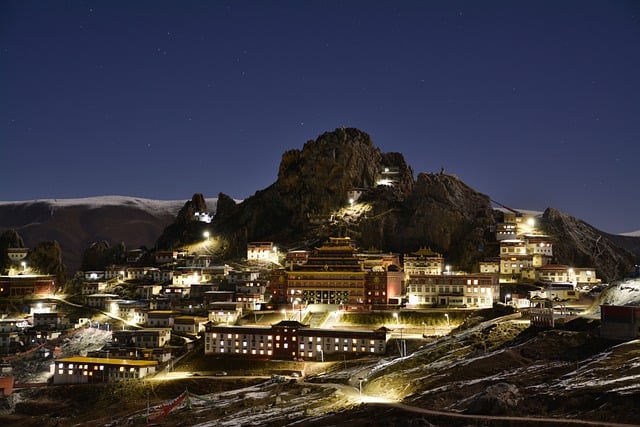1. Introduction
Badrinath Temple, located in the Chamoli district of Uttarakhand, is one of the most sacred pilgrimage sites in Hinduism. Part of the Char Dham Yatra, this temple is dedicated to Lord Vishnu and attracts millions of devotees annually. In this complete guide, we cover everything you need to know, from the temple’s history and significance to travel tips and nearby attractions.
If you’re planning a visit to Uttarakhand, check out our detailed guide on top tourist places in Uttarakhand.
2. History of Badrinath Temple
The origins of Badrinath Temple can be traced back to ancient times. It is said that the temple was established by the Hindu saint Adi Shankaracharya in the 8th century AD. Badrinath holds immense religious significance, as it is believed to be one of the four sacred Char Dhams established by Adi Shankaracharya. The temple has withstood centuries and continues to be a major site for spiritual devotees.
Historical Highlights:
- Established by: Adi Shankaracharya
- Era: 8th century AD
- Religious Importance: Part of the Char Dham and Panch Badri Yatras
To learn more about the history of Uttarakhand’s temples, visit our post on Kedarnath Temple.

3. Architecture and Significance
Badrinath Temple is an architectural marvel, representing a fusion of North Indian and Garhwali architectural styles. The temple stands at an elevation of 3,300 meters and is surrounded by snow-capped mountains, making it one of the most scenic spiritual destinations in India. The main deity is Lord Vishnu, in the form of Badrinarayan, seated in a meditative posture.
Architectural Features:
- Style: North Indian, Garhwali influence
- Main Idol: Lord Vishnu as Badrinarayan
- Unique Element: The temple’s location amidst the Himalayas
Explore more about sacred architecture in our post on Somnath Temple.
4. Best Time to Visit
Badrinath Temple remains closed for six months due to heavy snowfall. The best time to visit is between May and October when the weather is pleasant, and the temple is open to pilgrims. During this period, the area comes alive with spiritual energy, and several religious festivals take place.
Seasonal Tips:
- Summer (May-June): Ideal time with moderate temperatures.
- Monsoon (July-September): Can be risky due to landslides, but offers a lush green landscape.
- Autumn (October): Last chance to visit before the temple closes for winter.
Check out our detailed guide on best times to visit Uttarakhand.
5. Badrinath Temple Opening Hours and Entry Fee
Badrinath Temple follows a strict schedule during its open season. The temple opens in the early morning and closes after the evening aarti. There is no entry fee, but donations are always welcomed.
Visiting Hours:
- Morning: 4:30 AM – 1:00 PM
- Evening: 4:00 PM – 9:00 PM
- Entry Fee: Free, but donations are appreciated.
Make sure to check with local authorities for specific timings, especially during festivals.

6. How to Reach Badrinath Temple
Badrinath is well-connected by road, but due to its high altitude, the journey can be challenging. The nearest airport is Jolly Grant in Dehradun, and the nearest railway station is Rishikesh. From there, you can hire a taxi or take a bus to Badrinath.
Travel Options:
- By Air: Nearest airport is Jolly Grant, Dehradun.
- By Rail: Nearest station is Rishikesh (297 km).
- By Road: Regular buses and taxis are available from Rishikesh and Dehradun.
Learn more about traveling to Uttarakhand in our post on Uttarakhand travel tips.
7. Things to Do Near Badrinath Temple
While the temple is the main attraction, there are several other spiritual and scenic spots to explore near Badrinath.
Nearby Attractions:
- Tapt Kund: A natural hot water spring located near the temple.
- Mana Village: The last Indian village before the Tibet border.
- Vasudhara Falls: A breathtaking waterfall located 6 km from the temple.
- Bheem Pul: A natural rock bridge with mythological significance.
For a comprehensive travel itinerary, visit our post on things to do near Kedarnath Temple.
8. Badrinath Temple Yatra Tips
The Badrinath Yatra is not just a religious journey but also a test of endurance due to the temple’s high altitude and cold weather. Here are some essential tips for making your yatra smooth and fulfilling:
Yatra Essentials:
- Clothing: Carry warm clothes even in summer, as the weather can be unpredictable.
- Health: Acclimatize yourself to the high altitude to avoid sickness.
- Pilgrimage Etiquette: Follow temple protocols and respect local customs.
Learn more about pilgrimage tips in our Char Dham Yatra guide.
9. Religious Significance of Badrinath Temple
Badrinath Temple is one of the most important religious sites in Hinduism. It is dedicated to Lord Vishnu and forms part of the Char Dham Yatra, along with Kedarnath, Gangotri, and Yamunotri. Badrinath is also one of the Panch Badri temples, which makes it a central place of worship for devotees of Lord Vishnu.
Religious Highlights:
- Char Dham Yatra: One of the four sacred pilgrimage sites.
- Panch Badri Yatra: Includes Yog Dhyan Badri, Bhavishya Badri, Adi Badri, and Vriddha Badri.
- Lord Vishnu: Worshiped as Badrinarayan, seated in a meditative pose.
For more on the religious significance, check out our Kedarnath Temple guide.
10. Travel Tips and Recommendations
When traveling to Badrinath, it’s essential to be well-prepared, especially given the remote and high-altitude location of the temple.
General Tips:
- Accommodation: Book in advance, as hotels and guesthouses fill up quickly during the pilgrimage season.
- Health Precautions: Carry necessary medications, especially for altitude sickness.
- Local Cuisine: Don’t miss the chance to try local Garhwali food in nearby dhabas.
For more travel tips, visit our Uttarakhand travel recommendations.
11. Conclusion
Badrinath Temple is more than just a pilgrimage site; it’s a place where spirituality meets natural beauty. Whether you’re a devotee or a traveler seeking peace and serenity, a visit to Badrinath will leave you enriched. With the right planning and preparation, your journey to this sacred site will be a memorable one.
To explore more about Uttarakhand and other spiritual destinations, visit Travel Atlas.


